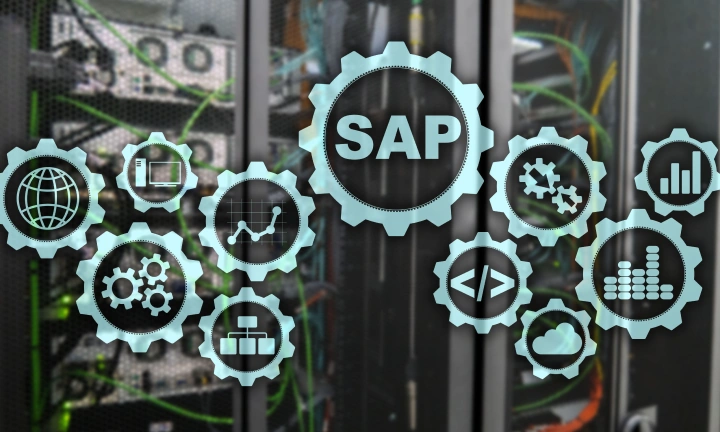Thinking of 2027 raises many questions, especially for people working in the IT department for businesses employing SAP services. The most common concern is likely to be ‘will we successfully manage SAP S/4HANA migration?’
2027 is considered as a deadline by SAP for enterprises to migrate to their new and enhanced system SAPS/4HANA. Post the deadline, the providers will not assist in older systems. However, the said deadline is far away from now but migrating to SAP S/4HANA is not an easy affair.
Stick to this piece to know what things to consider while migrating to S/4HANA.
What to Expect from SAP S/4HANA Migration?
SAP S/4HANA is undoubtedly exemplifying a great advancement in ERP software and has considerable benefits. Primary advantages include:
Future proof investment and solution
- The existing version will be out of the market by the end of 2027. SAP is not investing in SAP ECC; it is completely focusing on S/4HANA.
- Constant funding in, updating, and upgrading legacy ERP will lead to a complex migration process. As more development undergoing in the current system will directly cause more things to migrate.
The improved approach towards updates makes it a user-friendly system. Earlier, new functionalities needed external assistance to switch on by the in-house teams. With this advanced cloud-based version, updates will be enforced quarterly, eliminating the possibilities of delayed updates due to a lack of resources.
A simplified solution
SAP business suite data has been streamlined heeding the impact of SAP S/4HANA in-memory settings. Precisely, SAP removed various table types from the data model successfully. As your database is significantly reduced, your recent system will run faster than ever.
When to Start the Migration Process?
As per SAP, migration from conventional systems to S/4HANA can take up to 18 months. However, Gartner’s research tells a different story; it says that the businesses that have started the migration process claim that it will take longer, as the key steps are consuming as much time as the whole process should.
Migration is not just transferring your existing processes and data file, it is like relocating from the place you have stayed for more than twenty years. So, the process is lengthy but has its perks, it streamlines and reduces databases to make your system run effectively.
There are four basic alternatives for enterprises considering migration; hosted by a service partner, on-premise, and self-hosted, cloud ERP and privately operated cloud. Start the migration process as soon as possible to save the business funding, as the cost of migration will considerably heighten due to the proximity of the deadline.
Archiving Legacy Data in Preparation for Migration
For an in house team, migration can result in work pressure as the task is huge. So, to help people cope with so much work, a worthwhile preparation would be archiving legacy ERP custom code. This advances the migration process and impacts your business.
Few studies have drawn attention to the ABAP code, as the code is customer-centric and is not used after being created once. SAP S/4HANA helps to clean the system and run it smoothly. Finishing this step before the migration process will help in decreasing data volumes and that will lead to low costs and less time.
Which Cloud-oriented EDI Approach Will Suit Your Business Needs
Choosing the right EDI is a complicated process because of the large number of EDI service providers in the market. If you don’t know what to look for, it can cause you some serious problems later. Knowing which cloud-based EDI approach will suit your business is important as it constituents the first step towards future-proofing your enterprise.
Here is what to consider while choosing a potential EDI service provider.
Do they provide 24×7 monitoring?
The biggest reason for businesses to choose EDI services is to relieve themselves from the burden of monitoring outgoing and incoming data. Going for 24×7 service provider means businesses are not required to check whether the texts are sent or received constantly, the right invoicing method is followed or certificates need renewal.
Implementing ongoing updates
To future proof, your enterprise chooses an EDI service provider who is determined to implement continuous updates.
Moving to a Cloud-oriented EDI Approach or Older Variants Still Compatible?
Such a large scale transition involves altering the origin of EDI data, so it becomes quite risky. With the given scope of work involved in the migration process, the EDI system will be affected at some stage. So, it makes sense to use this as an opportunity to migrate to a future-oriented solution. However, the modern feature of S/4HANA may not be compatible with the older versions.
However, the S/4HANA multi-tenant cloud alternative provides limited customization but is still valid for users with this system to incorporate outsourced EDI solutions into their ERP network. This simply means all SAP S/4HANA users have the chance to benefit from the efficient EDI coupled with the new features of S/4HANA, regardless of any system they opt for.
On-premise and cloud-based EDI solutions are often compared, cloud-based EDI solution is most preferred because it offers numerous benefits, like stable pricing, cost-effectiveness, scalability, and flexibility.
Custom Coding for the Transformation
Custom code Lifecycle Management is a process used to evaluate the private code concerning optimization choices, quality, and frequency of use. To perform this, you can employ the readymade tool for S/4HANA; this tool is provided in the SAP support portal that can be used to discover what and which level of conflicts arise due to the implication of SAP S/ 4 HANA.
The user procedure login and the source code monitor can be employed to analyze at an intense level of which improvements are not required or used in day-to-day operations. These processes help to specify and render necessary adjustments before the actual migration process starts.
Inspect the Performance of Your IT Architecture
By employing the readiness check, you can inspect whether your IT architecture is ready for the migration process. The existing system requires to be correlated with the pre-requisites of the SAP S/4HANA environment to make sure that the required conditions are met for the new business suite.
An introductory check must include, monitoring, security, system sizing, backup strategy, and security.
Advantages of SAP S/ 4HANA
- Guaranteed smooth operation while migrating
- Modernizing your existing operating tools
- SAP landscape is simplified
- Improved flexibility because of the association of the systems to the Adobe document server
- Data gets transferred directly to the back end or a worklist
Conclusion
SAP proposes a six-phase methodology for operation implementation and planning. This methodology is also referred to as SAP activate. The six-stage procedure includes discover, prepare, recognize, explore, deploy and run. If you are still thinking if you should go for SAP S/ 4HANA implementation (or you have not begun with the discovery phase) or if its logistics and finance can meet your requirements, you must try out such a system soon to get a clearer view. By keeping these seven key considerations in mind, your business can successfully migrate to SAP S/ 4HANA in a shorter time frame.





